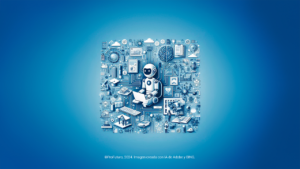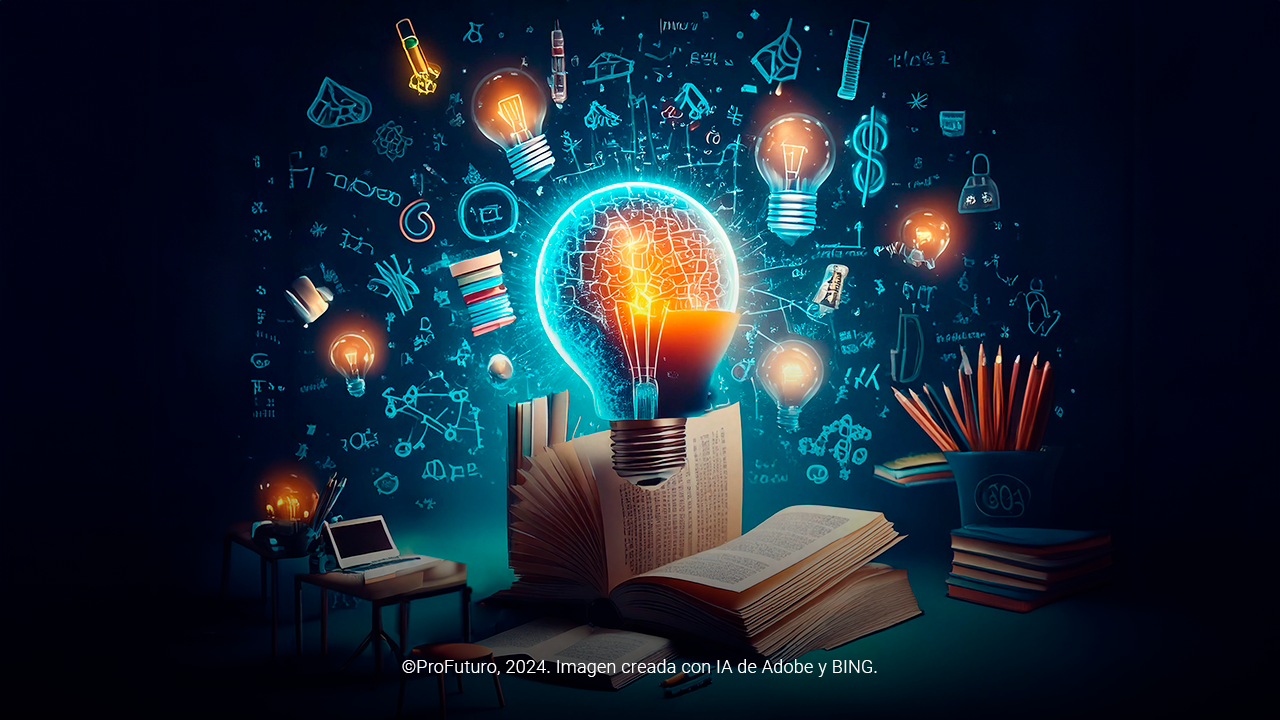In recent years, artificial intelligence (AI) has moved from being a science fiction concept to a technology embedded in our daily lives. From virtual assistants like Siri and Alexa to content recommendations on platforms like Netflix and Spotify, AI is everywhere. However, although we live alongside it, few truly understand how it works, what it entails, and, most importantly, what its limitations are.
This widespread lack of understanding can have serious consequences. It not only affects how we use technology but also how we perceive its risks and benefits. As AI advances, it becomes increasingly important for everyone, not just experts, to have a basic understanding of this technology. This is where the concept of “AI literacy” comes in—a competence that is becoming essential in the 21st century. It’s not about learning to program or becoming a technology specialist, but rather developing the ability to interact with these tools critically and consciously.
AI is already here and affecting our daily lives

AI has leapt from the pages of science fiction into our everyday lives. Every time we use a streaming service, perform a Google search, or receive a notification on our phone, we are interacting with systems that use artificial intelligence. These algorithms analyse large amounts of data, detect patterns, and make decisions in a fraction of a second. The problem is that we are often unaware of this interaction, which can lead to misunderstandings about what AI can and cannot do.
For instance, many people confuse AI with robotics or think that any automated system is intelligent. But AI is much more complex than a simple robot, and understanding its capabilities and limitations is key to harnessing it responsibly and effectively. This is where AI literacy comes in: the ability to recognise, understand, and critically evaluate the AI systems we interact with.
If we want future generations to be prepared for a world where this technology will play an increasingly important role, it is crucial that AI literacy is integrated into education systems.
Key Competencies for Understanding AI
The term literacy has traditionally been used to describe the ability to read and write. However, in recent decades, its meaning has expanded to include a deep understanding of a wide variety of skills. Today, we talk about digital literacy or media literacy, among many others. AI literacy refers to a set of skills that enable individuals not only to understand what artificial intelligence is, but also to interact with it critically and use it effectively in their daily lives, at work, and in decision-making.
In the article What is AI Literacy? Competencies and Design Considerations, the fundamental components that AI literacy should include are defined. These are:
- Recognition of AI: The first competency focuses on being able to recognise AI when we see it. Often, we interact with AI without realising it. From mobile applications to recommendation systems in online stores, AI algorithms operate in the background. Developing the ability to identify these systems is the first step in understanding how they affect us.
- Understanding AI’s capabilities and limitations: AI can perform tasks that once required human intervention, such as image classification or analysing large amounts of data. However, it is still far from achieving human-like “general intelligence.” This means that while AI can perform certain tasks with great precision, it remains limited in many aspects, especially regarding creativity, critical thinking, and decision-making in complex contexts. Recognising these capabilities and limitations is essential for making informed decisions about when to use it.
- Understanding how AI works: The third area of competence refers to understanding how AI functions. Users often develop what are called “folk theories” to explain how AI algorithms work, which can lead to misunderstandings about the decision-making processes of the systems. For example, AI uses representations of the world and makes decisions based on these models. However, these representations are always simplifications, and a basic understanding of this process can help users better interact with the technologies. Transparency is a key element in helping users build more accurate mental models of how algorithms work and avoid falling into misconceptions.
- How AI should be used: Another critical component of AI literacy is understanding how to use this technology ethically and responsibly. AI poses significant challenges, such as algorithmic bias, data privacy, and the impact on employment. AI systems can perpetuate or even amplify biases if not properly designed and supervised, and users must be aware of these risks. It is also essential to reflect on the social and ethical implications of AI. The ability to make critical decisions about when and how to use AI, as well as understanding its potential adverse effects, is fundamental to ensuring that society can benefit from this technology safely.
- Understanding how AI is perceived in society: Finally, AI literacy involves understanding how this technology is perceived in society. Public perceptions are often influenced by media representations, which tend to dramatise or exaggerate AI’s capabilities. These misconceptions can lead to unrealistic expectations about what AI can achieve, which in turn may result in public disappointment or unfounded fear. Additionally, people must learn to be critical consumers of AI, questioning its reliability and evaluating information critically. This is especially important when AI is used in sensitive areas like criminal justice or healthcare.
These basic competencies are not just for software developers or data scientists. In a world where AI is increasingly present in our lives, everyone needs these skills, from students to workers and consumers.
Integrating AI into Education: Preparing Future Generations
If we want future generations to be prepared for a world where this technology will play an increasingly important role, it is crucial that AI literacy is integrated into education systems. This involves teaching its basic principles from an early age, similar to how digital or reading literacy is taught.
Several countries are already taking steps in this direction. For example, in the United States, the AI4K12 Programme aims to introduce artificial intelligence into K-12 curricula (from early childhood to secondary education); in China, a country that is heavily investing in AI as a key element of its educational strategy, the government has implemented pilot programmes in various schools to teach AI in classrooms, starting from primary school; in Singapore, the government launched the “AI for Everyone” initiative, designed to provide basic AI training to all citizens, including students in schools; and in Finland, there is a free programme called “Elements of AI,” which teaches the basic concepts of AI and has been adopted by various educational institutions across the country.
These initiatives not only teach students how AI works but also engage them in practical activities, such as programming simple algorithms or using AI tools to solve everyday problems. Moreover, teaching AI from an early age can help students develop a critical mindset towards technology, which is especially important in a world where, as we have said, AI has the potential to influence many areas of our lives, from education to work and politics.
Challenges in Implementing AI Literacy
Although crucial, implementing AI literacy faces obstacles that hinder its widespread adoption. From a lack of technical knowledge to inequality of access and teacher training, we outline some of the key challenges:
- Technical knowledge gap: AI is a complex technology, and most people lack training in computer science or advanced mathematics, which makes understanding key concepts difficult. The key to overcoming this obstacle is designing inclusive educational materials that do not require advanced technical knowledge. Visual tools, drag-and-drop interfaces, and interactive simulations can help simplify complex concepts.
- Generational and gender gap: Older people, who did not grow up with digital technology, and women—historically underrepresented in STEM subjects—often have less access and participation in the AI field. Inclusive mentoring programmes are necessary to close these gaps.
- Inequality in access to technological resources: Not all students, schools, or regions have the same technological resources to learn about AI. This technological inequality can contribute to the digital divide, exacerbating economic and social disparities. To overcome this challenge, governments and educational institutions must invest in technological infrastructure and provide accessible resources for all students, regardless of location or socioeconomic status. This may include providing devices, installing high-speed internet networks in rural areas, and developing AI programmes that can run on low-cost equipment.
- Lack of teacher training: Many teachers are not trained to teach about AI. To overcome this challenge, it is necessary to develop continuous training programmes that equip teachers with AI-related knowledge. Communities of practice for teachers can also facilitate the exchange of ideas and best practices among teachers facing similar challenges.
As artificial intelligence becomes increasingly integrated into our lives, AI literacy is becoming indispensable. It’s not about becoming an expert but about being an informed and critical user, able to interact with this technology consciously and responsibly.
Governments, educational institutions, and businesses must collaborate to ensure that everyone has access to basic knowledge about AI. This will not only help people make better decisions in their daily lives but also contribute to a more equitable society, where AI is used ethically and responsibly.
The future is already here, and AI is part of it. The question is: are we ready to harness it consciously and critically, or will we let the technology guide us without truly understanding it?
References
Long, D., & Magerko, B. (2020). What Is AI Literacy? Competencies and Design Considerations. In Proceedings of the 2020 CHI Conference on Human Factors in Computing Systems (pp. 1-16). Association for Computing Machinery. https://doi.org/10.1145/3313831.3376727






